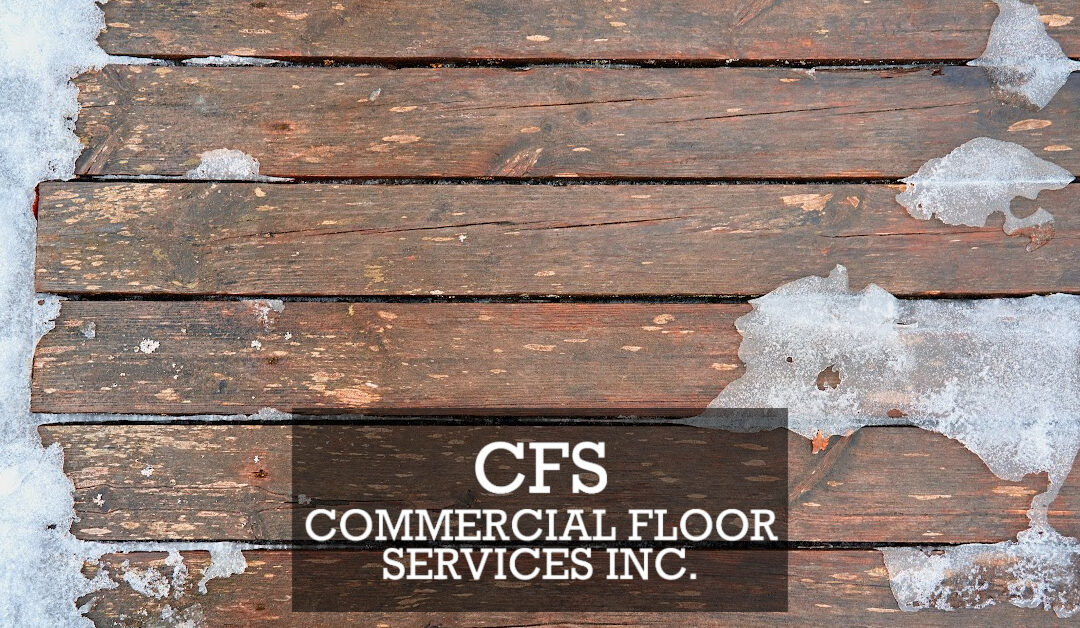Winter brings holiday cheer and opportunities for playing in the snow, but it also means an increased risk of damage to your floors. Scratches from ice and snow melting materials, fluctuating temperatures, and water from snowmelt can cause wear and tear to floors much more quickly than you will see in the summer months.
Protecting and caring for floors may be more time-consuming in the winter, but with the proper care and maintenance, you can keep your floors in their best shape despite the increased challenges of cold weather. Here are 3 ways to protect your floors this winter.
- Salt, sand, and water
With snow comes materials used for ice prevention like salt and sand that are easily tracked inside and onto floors. These materials are abrasive and produce scratches on hard floors or damage the integrity of porous flooring materials like carpet. Dried salt leaves unsightly white stains that can also damage the floor.
The simplest way to eliminate the damage that snowmelt materials can cause to floors is to place mats by all outdoor entrances to catch the brunt of the residue that would be tracked onto the floor from shoes and winter boots. Even with diligent entry mat systems, some ice melt residue will likely be tracked beyond the entrance of a room. Regular floor cleaners can react with the high pH of these materials and cause further damage. The best way to remove ice melt residue from your floor is to use a floor neutralizing product that will dissolve the snowmelt materials and eliminate the possible negative reaction.
- Know what normal fluctuation for floors looks like
The heater is used more often during the winter months, and the humidity drops. Floors, especially hardwood and its counterparts, respond to these fluctuations. When humidity increases in hotter months, floors expand, and when the humidity decreases, the floors contract. In the winter, when floors contract, small cracks or gaps may become present between the floorboards. These gaps are not often cause for concern, but the appearance of gaps may be undesirable for some homeowners.
Contraction and expansion are wood’s natural reactions to environmental changes. There is no real solution to these gaps short of waiting for spring when the relative humidity increases again. A humidifier may be placed in rooms with more excessive gapping. However, this may not be enough to prompt your floor to expand.
- Reseal hardwood
When snow and slush are on the ground, our shoes pick it up and bring it inside where it melts on our floors. Increased water on the surface of hardwood, especially if that hardwood has gaps, can damage the integrity of the floor. This, along with the potential damage from ice melting materials, means that a proper protective finish on the surface of floors is especially important in winter.
There are various chemical solutions used for sealing wood floors that all provide the same benefits. Using these solutions to reseal hardwood is just what it sounds like: adding a new layer of protective coating to the surface of your floors. Recoating will extend the life of your floors, keep your hardwood looking as good as possible, and better protect your hardwood from winter damage.
Resealing hardwood yourself is no small feat. Trust the professionals to protect your floors this winter and beyond. For resealing, questions about hardwood and seasonal changes, or anything else you need to be completely satisfied with your floors this winter, contact Commercial Floor Services today. We are committed to making your floors look and perform their best all year long.

